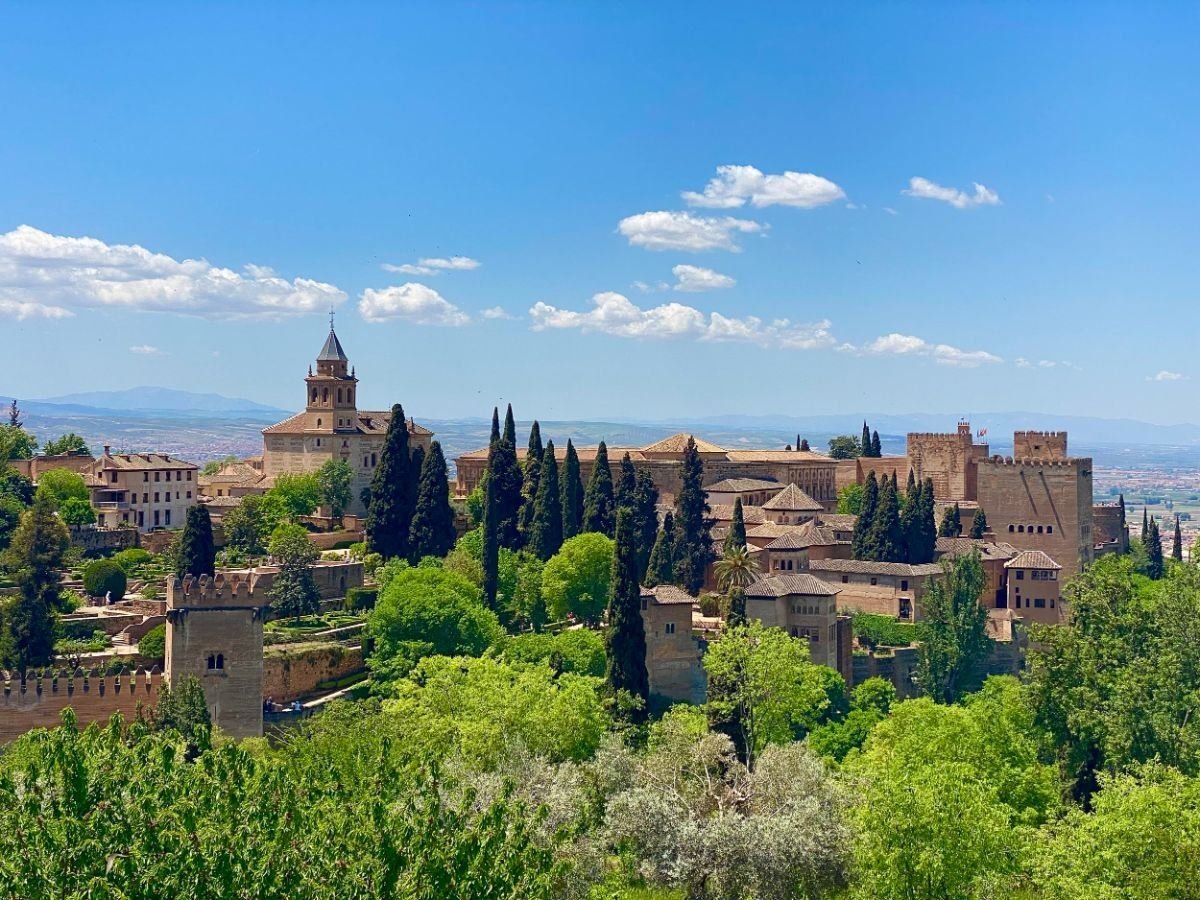The Alhambra, an exquisite masterpiece of Moorish architecture nestled in Granada, Spain, stands as a testament to the rich history and cultural fusion of the Iberian Peninsula. Its name, Alhambra, is derived from the Arabic words “al qala’a al-hamra,” which translate to “the red fortress,” a fitting descriptor for its distinctive reddish hue, especially at sunset when it glows like a jewel against the backdrop of the Sierra Nevada mountains.
This sprawling complex, comprising palaces, gardens, and fortifications, holds within its walls centuries of history, embodying the legacies of various civilizations that have called the region home. Its origins can be traced back to the 9th century, when it was initially constructed as a small fortress by the Berber ruler Sawwar ben Hamdun. However, it wasn’t until the Nasrid dynasty, during the 13th and 14th centuries, that the Alhambra reached its zenith of architectural splendor.
The Nasrid emirs transformed the fortress into a royal palace, adorning it with intricate stucco work, delicate tile mosaics, and breathtaking arabesques. One of the most iconic features of the Alhambra is the Court of the Lions, a mesmerizing courtyard adorned with a central fountain supported by twelve marble lions, each symbolizing a different constellation. This courtyard exemplifies the Islamic concept of paradise on earth, with its lush greenery, soothing sound of water, and intricate geometric patterns.
Beyond its architectural marvels, the Alhambra also served as a hub of intellectual and artistic exchange during the Islamic Golden Age. Scholars, poets, and philosophers gathered within its walls, fostering a vibrant cultural milieu that left an indelible mark on the history of Spain and beyond. The Alhambra’s library, known as the “Sultana,” housed a vast collection of manuscripts and texts, preserving knowledge from diverse traditions and paving the way for future advancements in science, literature, and the arts.
However, the Alhambra’s fate took a dramatic turn with the Reconquista, the Christian reconquest of Spain. In 1492, the Catholic Monarchs, Ferdinand II of Aragon and Isabella I of Castile, captured Granada and brought an end to Muslim rule on the Iberian Peninsula. Despite this shift in power, the Alhambra was largely preserved, albeit with modifications and additions reflecting the prevailing Christian aesthetic.
In the centuries that followed, the Alhambra underwent periods of neglect and decay, only to be rediscovered and restored during the 19th century. Its revival sparked a renewed interest in Islamic art and culture, inspiring artists, writers, and travelers from around the world. Figures such as Washington Irving, whose “Tales of the Alhambra” captured the imagination of readers, contributed to the Alhambra’s enduring legacy as a symbol of exoticism and romance.
Today, the Alhambra stands as a UNESCO World Heritage site and one of Spain’s most visited tourist attractions, welcoming millions of visitors each year. Its timeless beauty continues to captivate and inspire, inviting contemplation of the complex interplay between history, art, and identity. As the sun sets over the Alhambra, casting a rosy glow upon its walls, one cannot help but marvel at the enduring legacy of this architectural marvel, a testament to the enduring spirit of human creativity and ingenuity.

